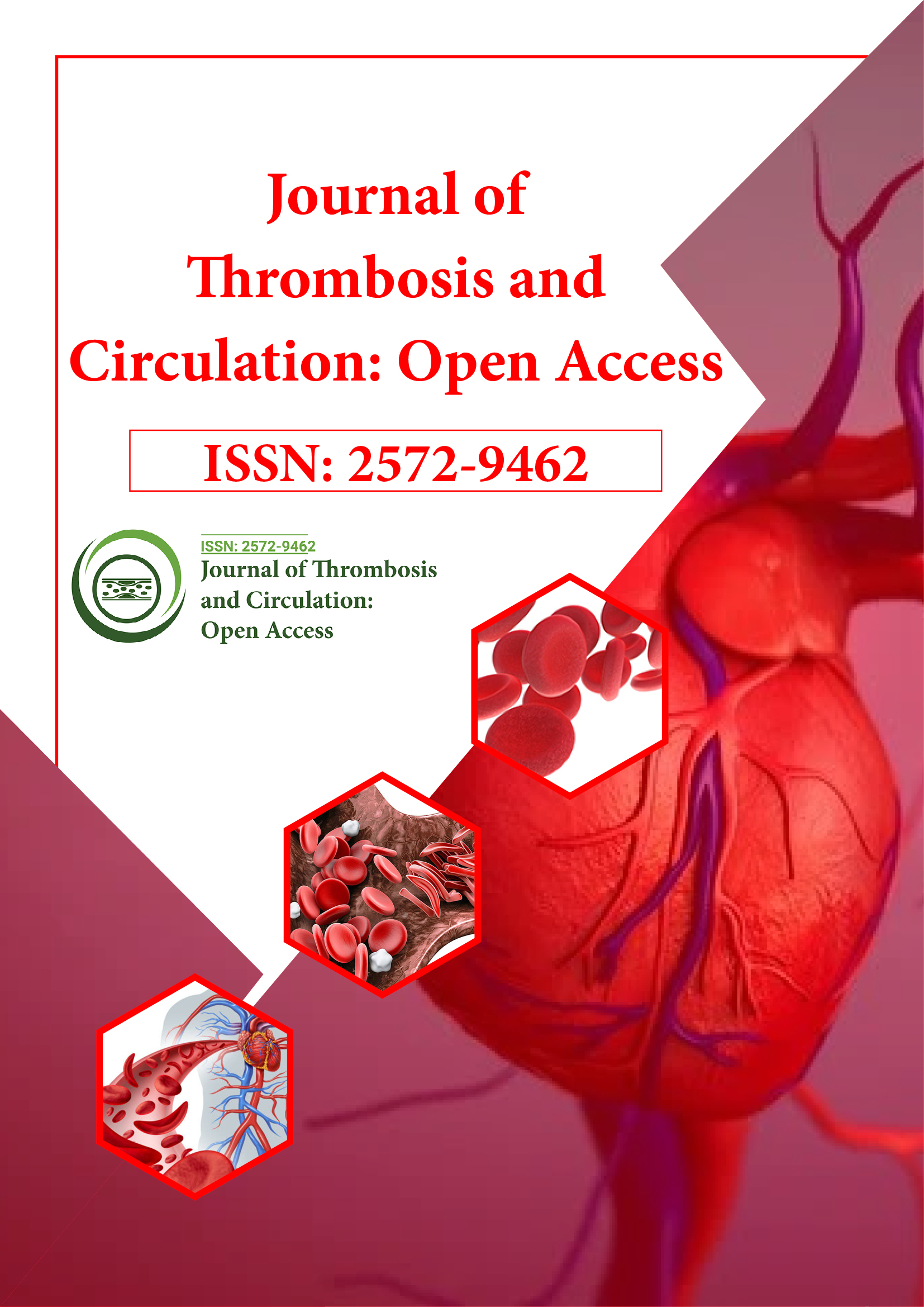Indexed In
- RefSeek
- Hamdard University
- EBSCO A-Z
- Publons
- Google Scholar
Useful Links
Share This Page
Journal Flyer

Open Access Journals
- Agri and Aquaculture
- Biochemistry
- Bioinformatics & Systems Biology
- Business & Management
- Chemistry
- Clinical Sciences
- Engineering
- Food & Nutrition
- General Science
- Genetics & Molecular Biology
- Immunology & Microbiology
- Medical Sciences
- Neuroscience & Psychology
- Nursing & Health Care
- Pharmaceutical Sciences
Opinion Article - (2023) Volume 9, Issue 4
Advancing Thrombolysis: Innovations and Future Directions in Clot Management
Fuster Rives*Received: 19-Jun-2023, Manuscript No. JTCOA-23-22272; Editor assigned: 21-Jun-2023, Pre QC No. JTCOA-23-22272 (PQ); Reviewed: 06-Jul-2023, QC No. JTCOA-23-22272; Revised: 13-Jul-2023, Manuscript No. JTCOA-23-22272 (R); Published: 21-Jul-2023, DOI: 10.35248/2572-9462.23.9.237
Description
Blood clots, also known as thrombi, play a vital role in preventing excessive bleeding and promoting wound healing. However, when blood clots form within blood vessels and obstruct the normal blood flow, they can have serious health consequences. Thrombolysis, a medical procedure aimed at dissolving these blood clots, has emerged as a valuable intervention to restore blood flow and prevent further complications. In this article, we will explore the concept of thrombolysis, its applications, and its benefits. Thrombolysis, also referred to as fibrinolysis, is a medical procedure that involves the administration of drugs to dissolve blood clots. The procedure aims to reestablish blood flow in obstructed blood vessels, preventing tissue damage and improving overall health outcomes. Thrombolytic agents, such as Tissue Plasminogen Activators (tPAs), work by activating the body's natural clotdissolving system.
Thrombolysis finds application in various medical scenarios where blood clots pose a significant risk to patients. Ischemic strokes occur when blood flow to the brain is blocked by a blood clot. Prompt administration of thrombolytic therapy can help dissolve the clot, restoring blood flow and minimizing brain damage. However, it is significant to initiate treatment within a specific time window to ensure its effectiveness. A heart attack, caused by a blocked coronary artery, can result in severe damage to the heart muscle. Thrombolysis can be utilized as an emergency treatment to dissolve the clot and restore blood flow, preserving heart function and reducing mortality rates. Deep Vein Thrombosis (DVT) occurs when a blood clot forms within a deep vein, usually in the leg. If left untreated, the clot can dislodge and travel to the lungs, causing a potentially lifethreatening condition known as pulmonary embolism. Thrombolysis may be considered in certain cases of DVT to rapidly dissolve the clot and prevent further complications. By dissolving blood clots, thrombolysis restores normal blood flow, reducing tissue damage and improving organ function. This can have a significant impact on patient outcomes, especially in conditions like stroke and myocardial infarction. Thrombolysis is often performed using minimally invasive techniques, such as catheter-directed thrombolysis, which involves the delivery of clot-dissolving agents directly to the site of the clot. This approach minimizes the need for open surgery, resulting in shorter recovery times and reduced risks.
Blood clots can lead to a range of complications, including organ damage, chronic conditions, and even death. Thrombolysis helps prevent these complications by addressing the root cause of the problem and restoring blood flow promptly. Despite the initial costs associated with thrombolytic therapy, it can be costeffective in the long run. By preventing further complications and reducing the need for extensive hospital stays, thrombolysis can potentially lower healthcare costs for both patients and healthcare systems. While thrombolysis is a valuable intervention, it is not without limitations and potential risks. Thrombolysis is most effective when administered promptly after clot formation. Delayed treatment may reduce its efficacy or increase the risk of complications. Thrombolytic therapy can increase the risk of bleeding, as it affects the body's clotting mechanisms. Careful patient selection and close monitoring are essential to balance the benefits and risks. Certain medical conditions, such as recent surgeries, active bleeding, or uncontrolled hypertension, may contraindicate thrombolysis. A thorough assessment of the patient's medical history and condition is vital before initiating the procedure. Thrombolysis plays a vital role in the management of clot-related conditions, helping to dissolve blood clots and restore blood flow. With its ability to prevent tissue damage, reduce complications, and improve patient outcomes, thrombolysis has become an important intervention in various medical specialties. However, careful patient selection, timely administration, and close monitoring are essential to maximize its benefits and minimize potential risks. As medical advancements continue, further research and innovation in thrombolysis are expected to enhance its effectiveness and expand its applications, ultimately improving the quality of care for patients with clot-related disorders.
Citation: Rives F (2023) Advancing Thrombolysis: Innovations and Future Directions in Clot Management. J Thrombo Cir.9:237.
Copyright: © 2023 Rives F. This is an open-access article distributed under the terms of the Creative Commons Attribution License, which permits unrestricted use, distribution, and reproduction in any medium, provided the original author and source are credited.
